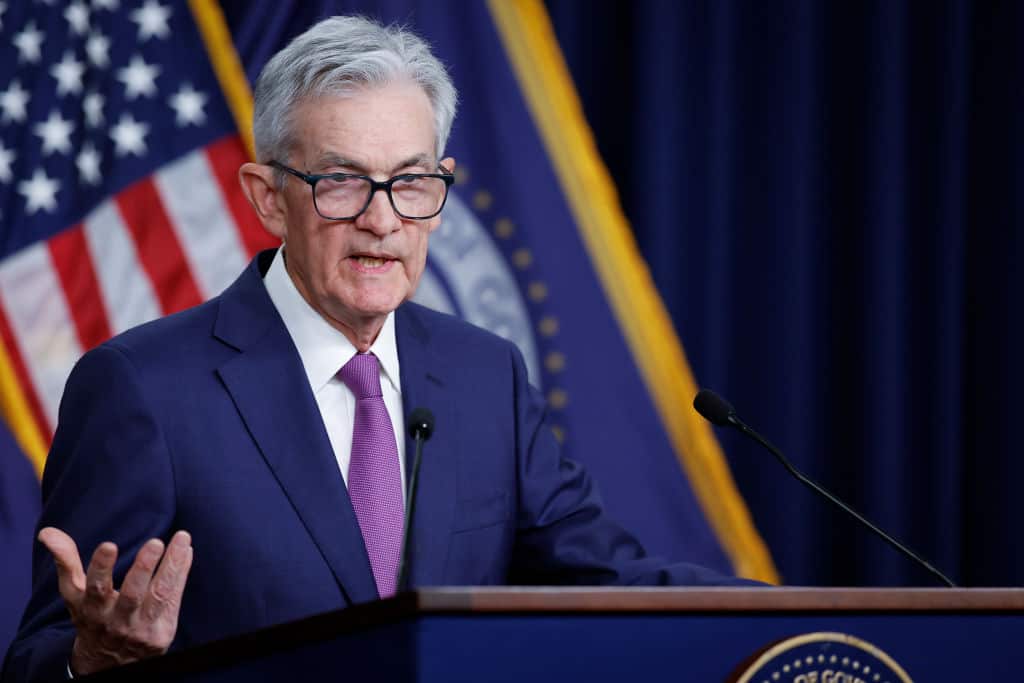Personal Finance
Social Security 2025: How the Fed's Interest Rate Decision Affects Next Year's COLA

Published:

The U.S. Federal Reserve’s larger-than-anticipated interest rate cut of half a percentage point lowered the benchmark federal funds rate to a range of 4.75%-5% in mid-September. This move rightly sparked optimism among market participants, as valuations of most risk assets are directly tied to the risk-free rate, at least when it comes out to modeling out a company’s discounted future cash flows. Bond yields have also come down considerably in recent months (lower yields mean higher prices), so investors are winning across the board.
But the thing is, millions of Americans unfortunately don’t participate in this market. And for those who are retired, social security payments are the key lifeline that puts food on the table.
Accordingly, the social security administration’s (SSA) cost of living adjustment (COLA) each year in October is a big event that millions focus intently on. There’s good reason for this, as this COLA will dictate how much a given senior’s monthly check will increase for the coming year.
Most seniors may already be aware that this cost of living adjustment is tied to inflation, but let’s dive into whether there’s any correlation to how this cut may affect next year’s COLA.
As many investors may be aware, the annual cost of living adjustment (COLA) put forward by the social security administration is aimed at helping seniors navigate rising prices across the economy. There are many factors that measure this rise, but the consumer price index (CPI) is the key factor that plays into how the SSA determines which the cost of living increase will be for an upcoming year.
The connection between the cost of living adjustment (COLA) and the Federal Reserve’s recent interest rate cuts in 2024 centers around inflation management and economic stabilization.
Simply put, lower interest rates could indicate a stabilizing economy, and lower expectations for future inflation. Given that COLA adjustments are typically tied to inflation rates, investors can assert via longer-duration bond yields where inflation may come in at over the coming year or two.
On that basis, looking at the one-year U.S. Treasury, which currently yields 3.99% at the time of writing, inflation expectations have dropped considerably (this Treasury note was trading above the 5% level as recently as July. One year treasury yields factor in how interest rates will move over time, and reflect an average of where the Federal Funds rate will be in a year’s time. Thus, the 2-year U.S. Treasury may be a better indicator of future inflation and interest rates – this particular bond provides a yield of around 3.6% right now.
Of course, there are many factors that impact bond yields other than inflation expectations. Overall GDP growth projections and demand for government bonds are other key factors that can drive short-term moves in these securities. But for retirees, it does appear that inflation expectations are coming down while soft landing expectations are increasing – that could potentially spell a lower COLA next year, if the market is right.

The Federal Reserve cuts interest rates to stimulate the economy, which can benefit individuals financially. Stock and bond values often rise with rate cuts, though the impact may already be reflected in current market prices. Homebuyers with variable-rate mortgages see lower monthly payments, while those with fixed-rate loans may refinance for savings. Lower rates also reduce reverse mortgage costs, allowing more home equity when selling. Additionally, credit card and consumer debt may see minimal interest reduction, as much of the expected decreases have already been priced in by the market. It’s also important to consider the benefit that lower rates have for governments, in slowing the growth of interest payments on the national debt.
Millions of retirees who rely on interest income from CDs, savings accounts, or money market funds have likely experienced a decline in earnings after the rate cuts. Similarly, bond investments could increase in value as yields decline. And with many retirees typically choosing a long-term investing mix that’s tilted heavier toward bonds, that’s a great thing.
For social security payments on the other hand, lower inflation expectations could mean lower increases each year. Thus, the age-old advice of investing whatever is left over every month into stocks and bonds continues to hold plenty of credence in this day and age.

It’s my view that the market is currently pricing in lower inflation expectations and a relatively soft landing on the horizon. I don’t know that this is my base case, but many of the top economists in the world are still sitting on this side of the fence. For now, another inflationary spiral higher seems unlikely, so seniors may be forced to search for other income sources outside of social security to battle healthcare and essentials prices that continue to rise.
Retirement can be daunting, but it doesn’t need to be.
Imagine having an expert in your corner to help you with your financial goals. Someone to help you determine if you’re ahead, behind, or right on track. With SmartAsset, that’s not just a dream—it’s reality. This free tool connects you with pre-screened financial advisors who work in your best interests. It’s quick, it’s easy, so take the leap today and start planning smarter!
Don’t waste another minute; get started right here and help your retirement dreams become a retirement reality.
Thank you for reading! Have some feedback for us?
Contact the 24/7 Wall St. editorial team.